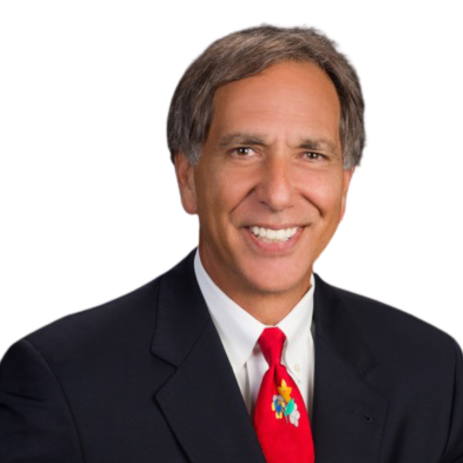Governance Surveys
Directorship Magazine
Hear a veteran director’s thoughts on the variables that influence opportunity and why every CEO should have a “warrior mentality.”
How can boards and CEOs collaborate to build a vision of value creation?
R. Eric McCarthey, a veteran leader and director who serves on the boards of Avnir, Hamra Enterprises, and Interra International, spoke with Adam Bryant, a senior managing director at The ExCo Group, and David Reimer, CEO of The ExCo Group. In the interview below, they discuss which issues are top of mind for directors, the changing nature of risk, and how to create a company culture that is open to change.
This interview first appeared in Adam Bryant’s LinkedIn series “The Director’s Chair.” Read Bryant’s recent interviews with Jane Sadowsky, NACD.DC®, a director on the boards of Allied Gold Corp., Nexa Resources, and Scientific Games and an NACD faculty member, and Peter R. Gleason, NACD president and CEO.
Reimer: What are some top-of-mind issues for you these days in your role as director?
McCarthey: Directors have three duties. The first two are covered by Delaware law: duty of loyalty and duty of care. The one that isn't talked about enough is ‘duty of vision.’
What I mean by that is a vision of value creation. Boards need to build that vision in partnership with the CEO. It should be a clear roadmap that's intuitively obvious to the casual observer. That’s an important part of a board’s collective responsibility—to establish what's intuitively obvious to the casual observer. Being able to synthesize across contexts is a critical skill for boards.
Another idea that isn’t discussed enough is potential. In my opinion, not enough boards have learned how to see a business model through the frame of potential. It needs facilitation; you want to arrive at dimensions of potential that you previously did not see.
Bryant: How do you think about potential broadly in the current landscape, where the number of variables that an organization has to consider seems to be growing exponentially?
McCarthey: Some of the variables can accelerate risk, but others can give you tailwinds for opportunities. Those opportunities have to be sized in terms of your capabilities as a company, and they have to be sized in terms of the returns and the time. So, that process is intense. It requires work and it requires debate.
For example, you have to think through a world where AI is blended into our human intelligence system and our capabilities. What can we do differently with our customers? How could we work more effectively with our supply chain? What could we completely remove?
With two of my boards, we're talking about fundamental process changes. But ultimately, you have to connect that to the marketplace you're trying to serve and how customers are going to feel, see, and sense the value you're creating for them.
Reimer: Has the nature of risk changed since, say, a decade ago?
McCarthey: It's more complicated today, certainly from [a] geopolitical risk, political risk, and regulatory risk [perspective]. What is very new and is now catching people off guard is the way younger generations have totally upended entire industries because of their consumer habits. It's going to continue to evolve very fast.
For example, just look at the consumption of media today. It’s upending entire business models that were built for a different kind of consumption model. People are starting to eat less processed food, and alcohol consumption is down. What if you're on the board of an alcohol company? There are so many different layers, but the key is that you’ve got to understand your current reality.
Bryant: What are the two or three X factors that you look for in CEO succession candidates these days?
McCarthey: The one character trait I would like to have in every CEO is a warrior mentality. It's not about being mean or harsh; it's about assembling whatever resources are required to go out and compete. That's job one.
The second characteristic is based on building culture and strategy together. Everybody talks about how culture eats strategy for breakfast, but that’s wrong. The two work interdependently.
The third is just a mindset around helping an organization get really good at learning with a systems view. You need somebody who understands systems.
I’ll also mention Max De Pree, a CEO who wrote several books on leadership. He said that the most important job of a CEO is to define current reality, because you can't do effective vision planning without a shared understanding of current reality. You also need a clear audit of your strengths and your weaknesses.
What distinguishes great leadership now, given the speed and disruption of everything in the world, is that you periodically have to take a time-out and reestablish current reality. What’s working? What’s not working? What do we need to start doing? What do you need to stop doing?
Reimer: A lot of employees are in a defensive crouch, given the stress in the world. How do you create a culture that is open to change?
McCarthey: The best approach is to create an outside-in approach to learning for your organization. You want to make sure that you understand the marketplace, especially what you can learn from your noncustomers, as well as your customers. If your organization gets really good at that skill, you'll create energy for innovation and new ways to think about doing things more efficiently.
Bryant: What were some important early influences for you?
McCarthey: My undergraduate degree was in science, but I was an entrepreneur right out of college. I ran a fish market in Boulder, Colorado, with some guys who were my age, and we were able to pull this company out of bankruptcy with loans from our families.
I learned how to work the streets, and that skill helped me when I started with the Coca Cola Co. I later went back and got an EMBA to learn more about business concepts and constructs.
I also played college football and college baseball. After every game, what did we do? We watched game film. What's the equivalent of watching game film in the world of board work? That’s what has to happen in executive sessions. How did the meeting go? What did we not do? What do we have to make sure we're on top of for the next meeting?
In my role as a director now, I’ve learned that value creation is easy to say, but it's hard to engineer. It requires an engineering mind and an imagination mind. When I’m in conversations with my fellow directors, I’ll often ask: Is there another way to think about this? Is there something we're missing?
Reimer: What’s the best leadership lesson you learned earlier in your career from one of your worst managers?
McCarthey: It’s about being stubborn, particularly the danger of anchoring too early in an idea. As people debate and make decisions, there might be your idea, my idea, and then there's the best idea. But I had a boss who was just pathetically stubborn. He thought he was the smartest guy in the room, and he would dismiss good ideas out of hand, convinced they wouldn’t work.
Bryant: When you mentor and coach senior executives, what themes come up most often?
McCarthey: The biggest one is listening, particularly listening to understand. Listening is hard work and requires enormous amounts of energy because a lot of people are already thinking about what they want to say or do before really understanding what the other person is saying.
The second one is defining winning and not being glib about it. What does winning mean? How are we going to win with our customers? How are we going to win with our supplier partners? How are we going to win with our employees? What article would we want to read about us in The Wall Street Journal three years from now? That's continuous work for leadership.


